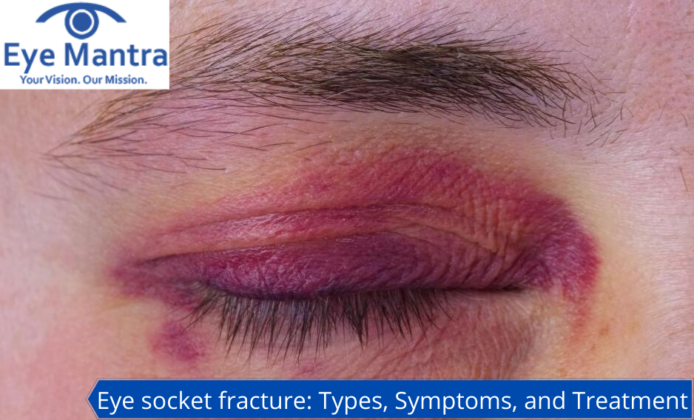
Contents
The eyes start their work from the moment you wake up till the time you go back to sleep. The eyes enable you to see and process all the virtual details of the world. Your perception of the world by looking at all the things around you is formed because of your eyes only. The eyes are able to look around without any discrepancy because of the eye socket that enables the eyes to move.
The eye has several components. The components are not just limited to the ones we know like “Retina, Iris, Cornea, Eyeball, Sclera, Etc.” The eye socket is like a bony cup that performs the function of a protective shield that surrounds the eyes. It is made up of seven bones.
The eyeball and the muscles of the eye are a part of the eye socket. The muscles help the eyeball to move.
Sometimes the bone around the eye is attacked with something bigger than the eye socket like” a fist, steering wheels, etc.” This can cause a fracture in the socket known as an Orbital Fracture.
An orbital fracture can lead to major eye injuries. Some of these injuries can also cause loss of vision. According to a study, an average of 28% of people loses their vision after an orbital fracture. Internally, the socket also includes tear glands, cranial nerves, ligaments, blood vessels, and other nerves.
It is divided into four main parts. Each part is formed by a separate bone. One can have a fracture in any part of the eye socket.
It is also known as the orbital floor. The inferior wall is formed by the upper jawbone, part of a cheekbone, and a small part of the hard palate. A fracture that happens in the interior floor is caused by a sudden blow on the lower side of the face. This can happen from a blunt object, car accidents, a fist, etc.
The zygomatic bone is the temporal or the outer side of the eye socket. Many of the important nerves run through this area. A fracture that happens to the zygomatic bone is caused by a sudden blow to the cheek or the side of the face.
The medial wall is formed by the ethmoid bone which separates your nasal cavity from your brain. A fracture that happens to the medial wall is caused by blunt trauma to the nose or the eye.
It is also known as the roof of the eye socket. The superior wall is formed by the part of the frontal bone. Fractures to the superior wall are the least common. But fractures to the superior wall can lead to injuries in other areas too.
As mentioned earlier, the eye socket has seven bones. The fracture can happen in any of them. Three types of fracture can happen in these seven bones:
This type of fracture is caused when the eye socket is struck violently by a hard object, such as the steering wheel of a car or a blunt object. The damage done by this fracture is usually from more than one area of the eye socket. It is also called a Tripod Fracture, or a “Zygomatic maxillary Complex Fracture”.
This type of fracture is also known as Comminuted Orbital Wall Fracture. This type of fracture is caused when you are struck by something larger than the eye socket, mostly caused due to a sudden hit by a fist or a blunt object. This can lead to a severe fracture that can cause the bone to break into multiple pieces or a comminuted bone. This fracture happens because of the pressure build-up in the fluid of the eye. This pressure is then transmitted to the eye socket that causes the fracture to turn outward.
This type of fracture is very common among children. The bones of children are more flexible than adults. So, instead of shattering the bones in the eye socket, it causes it to extend outwards, and after sometimes it returns to the position by itself. Hence, it’s called trapdoor fracture. Although it doesn’t cause any kind of external damage still it can lead to some severe nerve damages if no proper treatment is done.
One can never avoid accidents but can reduce the risk of them. Wearing protective eyewear when working or while engaging in any kind of sports can help to prevent eye socket fracture to a large extent. One can also wear goggles, protective shields, or a face-covering mask to avoid eye socket fracture as much as possible.
One should not be too much worried as these eye socket fractures are common and most people recover from their injuries after a few weeks. The effects after the surgery can last up from two to four months. The bottom line is that one needs to take as many precautions as possible because sometimes these injuries can have a lifelong effect.
The best way to treat your eyes is to visit your eye care professional and get your eyes checked regularly. He will be able to assess the best method of treatment for your eye ailment.
Visit our website Eyemantra.
To book an appointment call +91-9711115191. Or mail us at eyemantra1@gmail.com.
Our other services include Retina Surgery, Specs Removal, Cataract Surgery, and many more.